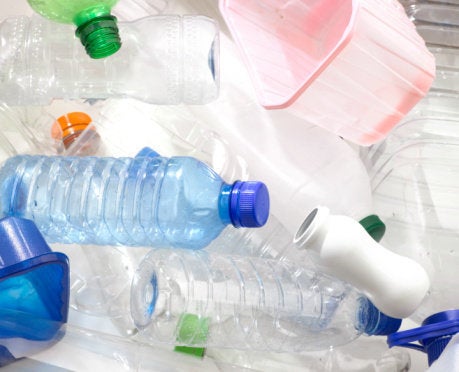
It never occurred to me to worry about autism when I was pregnant in the '80s, but today it seems that few expectant parents haven't considered the possibility that autism might affect their child. In fact, the number of children with autism spectrum disorders (ASDs) has been rising steadily, and the Centers for Disease Control and Prevention (CDC) now estimate that ASD affects about one in 110 children in the U.S.
Science journalist, Catherine Zandonella, notes in an excellent essay on NRDC Simple Steps, that "The cause of this rise in autism, which many studies have shown cannot be explained by changes in diagnosis methods, is still unknown. Although a few percent of ASD cases can be traced to inherited genes, our genes don't change dramatically over the span of just a few decades.
One thing that has changed dramatically over the last several decades is human exposure to toxic chemicals and metals in the environment. Many of these chemicals and metals are known to affect the developing fetal brain. These include lead, methylmercury, polychlorinated biphenyls (PCBs), arsenic, cadmium, and manganese.
The developing brain is highly sensitive during the first three months of growth. In children who are susceptible, exposure to a neurotoxic metal or chemical during this window could confer a lasting change in brain structure and function.
The chemicals known to cause harm to the developing fetal and infant brain are part of a larger family of 200 chemicals known from workplace studies to cause neurological harm in humans, according to a a recent review article by Philip J. Landrigan of the Children's Environmental Health Center at the Mount Sinai School of Medicine published in Current Opinion in Pediatrics. Children are exposed to roughly 3,000 chemicals in personal care products, building materials, cleaning products and motor vehicle fuels, yet fewer than 20 percent of these chemicals have been tested thoroughly to see if they harm the developing brain.
"We've created a situation where we are exposing our children and grandchildren every day to new chemicals that didn't exist [until recently]," says Landrigan. "We've never tested them, and we don't have a clue what these chemicals do to early development."
Chemicals suspected of harming the developing brain include phthalates (found in personal care products), bisphenol A (BPA), (found in the linings of food cans), brominated flame retardants (found in old computers, television sets and foam padding), chlorinated solvents used in industry, the now-banned organochlorine pesticide DDT, and organophosphate pesticides. Although these chemicals have not been directly linked to ASD, the fact that they can cause learning and behavioral problems supports the idea that chemicals in the environment could cause ASD.
How might environmental chemicals contribute to the risk of developing autism? One possibility is that these chemicals trigger ASD in children who inherited genes that make them susceptible to autism. These genes could be "turned on" or activated by an exposure in the womb, during childbirth, in early life, or during the toddler years.
Another possibility is that chemicals in the environment cause spontaneous gene alterations, called "de novo" mutations because they arise anew rather than being inherited. Mutations are fairly common but normally our DNA-repair mechanisms keep them from causing disease. When DNA-repair mechanisms fail, these mutations can lead to diseases such as cancer. Several de novo mutations have been detected in children with ASD. Some of these mutations are in genes related to brain development.
Environmental chemicals also could cause de novo mutations in the one or both of the parents. If these mutations occurred in egg or sperm cells, they could be passed on to the next generation. This could help explain why older fathers and mothers are more likely to give birth to a child with ASD.
It may be that multiple factors contribute to the range of conditions we call ASD. Many researchers now view ASD as an array of related disorders with similar symptoms but potentially with different causes.
More research is needed to explore the environmental aspects that contribute to the risk of developing ASD. Over a lifetime, the cost of care is estimated to reach $3.2 million per individual. Autism's costs are felt not just by the parents of children with ASD but also by society as a whole.
I've excerpted here just parts of Zandonella's truly fascinating article on autism but encourage you to read it all, especially if you or someone you know is considering parenthood. It offers several very thoughtful suggestions for ways to reduce risks.